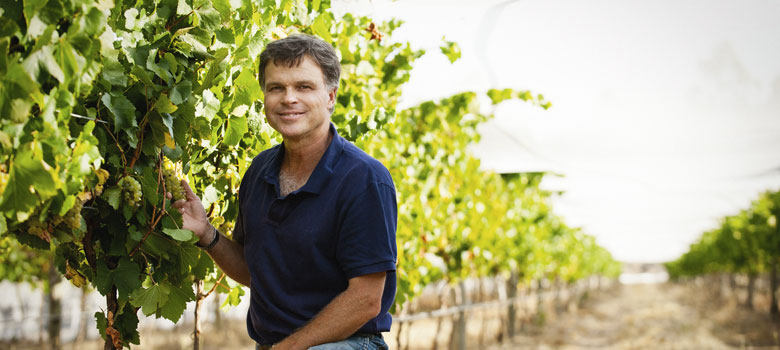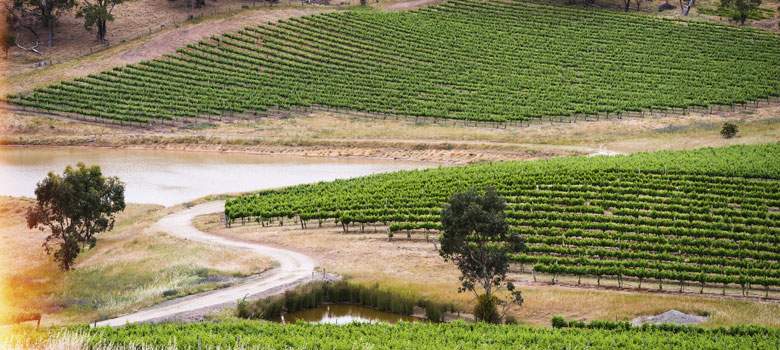
Wine
Boutique Wineries Breaking New Ground
The Australian wine landscape was remarkably different in 1963, when Dr Max Lake famously established the country’s first boutique winery, Lake’s Folly. The pioneering company built a cult following for its Cabernet and Chardonnay, paving the way for thousands of entrepreneurs to follow. But while Max Lake proved the concept, his contemporaries have faced many other challenges in pioneering new regions, grape varieties and wine styles.
Shop Best Australian Wine
Competition is fierce among the almost 2500 wineries grappling for the attention of media, retailers and consumers. Rising to this challenge, and driven by passion rather than short-term profits, boutique wineries have been responsible for many of the innovations and advancements in the industry over recent decades. In terms of what constitutes a boutique winery, the Australian and New Zealand Boutique Wine Show defines it as one that “crushes and bottles less than 250 tonnes annually under its own label and is independently owned.”
One of the most significant areas of boutique innovation has been in response to the challenges of climate change. It has been small producers that have broken ground in cooler territories, expanding to 65 the number of recognised wine regions in Australia. Wignalls Wines was established on the outskirts of Albany, Western Australia in 1982, after extensive research and investigations into terroir by founder Dr Bill Wignall, who found growing conditions were similar to those of Burgundy.
The move paid off with awards for Wignalls’ Pinot Noir and Chardonnay, and current managing director Rob Wignall says it has future proofed the winery from the warming conditions.
“It is common knowledge that the south west of Australia is going to be heavily impacted by climate change with a warming and drying climate approaching, due to the Indian ocean changing temperature,” he says.
“Albany, being the most southern grape growing region of Western Australia, is a safe bet. Although it has seen three consecutive years of dry conditions, the temperature remains consistently moderate and sunlight hours roughly consistent.”
Viticultural innovations have helped Wignalls tackle the fluctuating growing conditions in this frontier territory.
“Cloud cover some years can be high, so opening the canopy helps encourage more sunlight into the fruit zone,” he says. “In other years, like 2020, we’ve had normal sunlight exposure, so being in front of the seasons can be an interesting skill.
“The 2006 vintage was deemed to be the worst of all time in WA, however, we predicted the year’s growing conditions and Wignalls made some of our best wines ever that year.”
Shop Wignalls Wines

From Margins to Mainstream
Tempranillo has undoubtedly been one of the biggest successes out of the varietal and stylistic diversification – another response to the challenges of climate change. But it was still on the margins in 1998, when La Linea co-founder Peter Leske planted the Adelaide Hills’ first vineyard to Tempranillo.
“Other people followed suit and now there’s a reasonable amount of Tempranillo in the ‘Hills; a good 15 or 20 vineyards probably,” Leske says. “It’s certainly found a niche here, but La Linea was born as a Tempranillo specialist.”
Today, Tempranillo is grown in regions spanning the length and breadth of Australia, but Leske was seduced by the cooler climate expressions.
“It’s associated in Spain with higher altitude. It’s early ripening, which reduces the risk in a cool climate,” he explains.
“I certainly admire and respect Tempranillo from some warmer climates as well, but I prefer the cooler attributes of red berry, dried herb and cherry tomato. And, not only are the aromatics different, they are also a notch more intense.”
The unique offering helped differentiate La Linea from the many other wineries grappling for the attention of media, retailers and consumers.
“When I first flew to Melbourne and Sydney with our first vintage in 2007, being a Tempranillo specialist certainly made people more receptive to what we had to say,” Leske says.
“If I’d gone over there with a Sauvignon Blanc and a Chardonnay and a Pinot Noir, I might not have got my foot in the door in some places.”

The boutique difference
Natalie Fryar spent 14 years with leading Sparkling wine producer Jansz, prior to launching her own label Bellebonne.
“The big advantage of small wineries is that they tend to be driven by the wine first and commercial decisions later,” she says. “We tend to think quite differently about the way things are done, because we’re the ones doing it – we haven’t got a team of cellar people.”
“A lot of the innovation comes through sheer necessity. We create tiny batches of wine and think of ways we can make them unique and stand out.”
Bellebonne is currently poised to launch its first non-vintage wines, with Fryar having waited very patiently to build up her reserve wines since launching in 2014.
“I was able to wait and see how the wines evolved and follow that evolution, because I didn’t have to respond to any shareholders – just the wine,” she says.
Shop Bellebonne Wines
Clare Valley company Eldredge Wines went against the grain when it launched its first Sangiovese in 1998.
“It was a very hard sell, no-one understood it at all back then,” founder Leigh Eldredge says. “People would come into the cellar door and say, ‘no thanks, we don’t like Sangiovese, that’s too light. All we like is big full-bodied Shiraz’.”
But Eldredge makes Sangiovese in a more full-bodied style, inspired by the Super Tuscans of Italy. Slowly he convinced the doubters, and the quality of his output was recognised on the world stage.
“I thought our 2005 Sangiovese looked fabulous, so I put it in the London International Wine Challenge,” he says.
“There were four gold medals in the Sangiovese category; three went to Italy and one to us. So that was pretty exciting!”
Shop Eldredge Wines

Last year, Eldredge won the trophy for Best Rosé at the Clare Valley Wine Show, for a Rosé wine made with Sangiovese.
“Sangiovese is one of the higher acid red varieties. Because of that high acid, I think it’s wonderful for Rosé,” he says. “You get lovely sweet fruit, residual sugar of around 3-5 grams per litre and then nice crisp acid to give it that crisp, dry finish.”

Innovative Thinking
The Rosé revolution has created additional opportunities for boutiques to innovate with different wine styles, according to Malcolm Leask, co-founder of McLaren Vale winery Hither & Yon.
“The Rosé boom brought wine back into the lunchtime or mid afternoon drinking occasion, and that lends itself to either light reds or new white varieties,” he says.
“Best of all, it spreads vintage out, so we’ll get some whites in early and not have such an influx of reds all at once. That gives us time in the winery to handle each variety individually.”
Hither & Yon is now working with 15 different grapes. It will release its first Montepulciano next year, with Fiano and Vermentino soon to be planted.
“We’re quite focused on making single varietal wines, because we like to get the feedback on varietal character – and whether it can stand on its own two feet – before we start doing any blending with them,” says Leask.
“Blends are also a nice way of introducing varieties, but from a growing perspective we want to be able to translate what we’re doing in the vineyard more directly into the finished wine.”
Shop Hither & Yon

Outside the Box
Among Australia’s more unique blends is Moonmilk, from Margaret River-based Flowstone Wines, which combines Savagnin, Viognier, Gewürztraminer and Sauvignon Blanc. But founder Stuart Pym argues his single variety Sauvignon Blanc is even more unique than this “slightly wacky” creation.
“I know this sounds a bit strange, given how popular Sauvignon Blanc is,” he says. “But the wine I make is much more in the style of the Old World, specifically Sancerre and Pouilly Fume, rather than the bright, fruity wines of New Zealand and Australia. It is a very palate-focused wine, with textures, complexity, minerality and fantastic flavour persistence.”
The Flowstone brand is otherwise focused around its estate vineyard, which is planted to Chardonnay and Cabernet in the sub-region of Forest Grove.
“I have worked nearby with one of my previous jobs, and really feel Forest Grove is the Chardonnay hotspot for Margaret River,” says Pym. “I have also noticed that Cabernet Sauvignon, on gravelly sites (known as Forest Grove soils) produce some beautifully elegant, yet concentrated wines.
“We chose and bought the block of land, decided where to plant the vines, what varieties to plant, the vineyard layout, and have operated it ever since.
“You build a remarkable connection to your vineyard when you are this close to it.”
However, he admits that being a small boutique producer is very much a doubled-edged sword.
“Being so much more hands on creates wines of nuance, texture and personality, and being the person that does all the work makes me fully responsible for them,” he says.
“You have full control over what you do, although no-one to blame if you stuff up!”